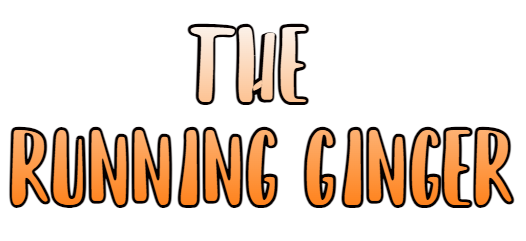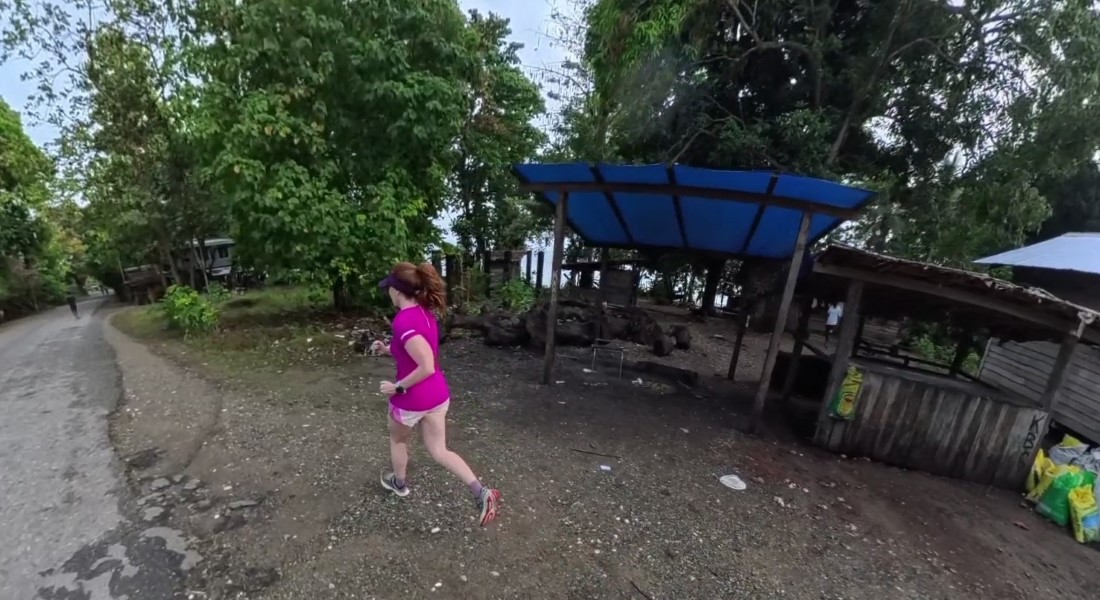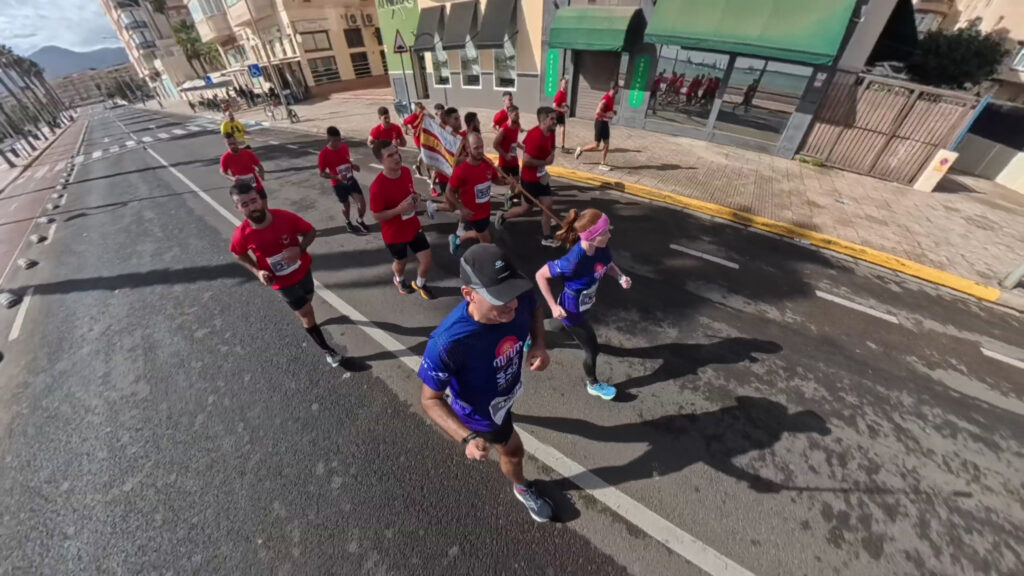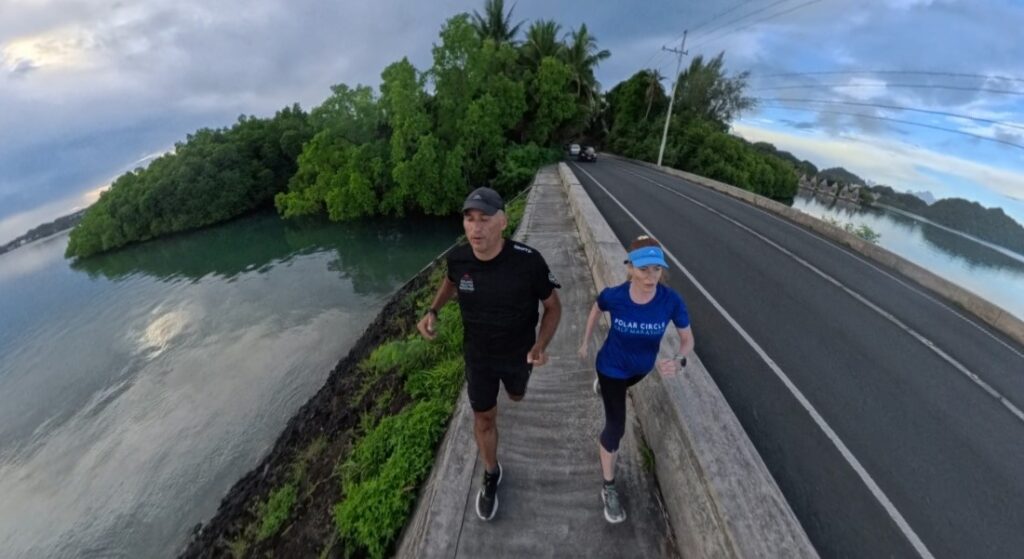Honiara, Solomon Islands, 22 of August 2025.
Running in Honiara offers a unique mix of city life and South Pacific charm.
Our 4K morning loop took us along Lambi Road, past the Central Bank, colorful shops, and lively streets, up to Holy Cross Cathedral with its breezy views and vibrant artwork. We wove through Honiara Central Market and detoured to Point Cruz Wharf, where cranes, boats, and busy workers highlighted the city’s port life. Even in just a few kilometers, running in Honiara revealed its energy, culture, and colors. 🌧️
Our second run stretched 12 kilometers west to Vailala Beach, exploring quieter streets, historic churches, and friendly neighborhoods.
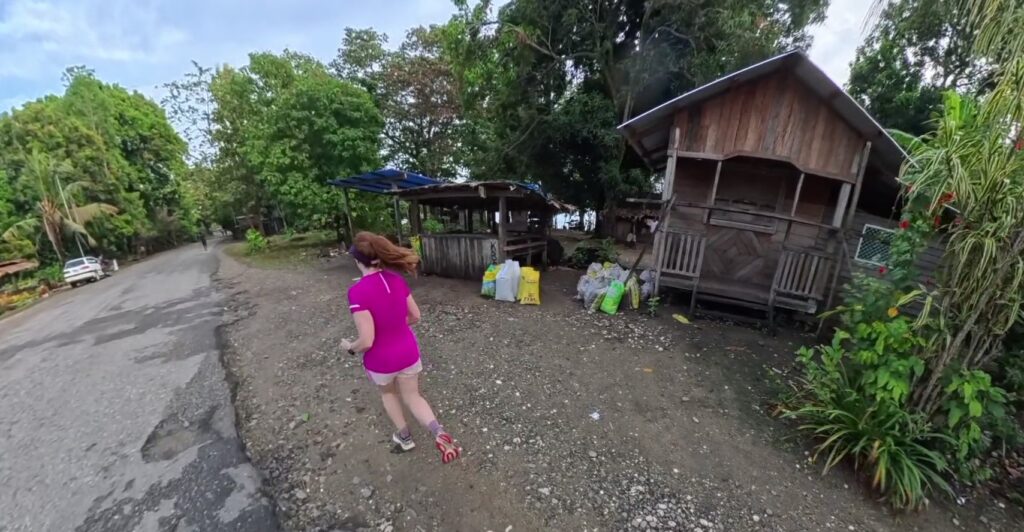
The coast offered empty beaches, misty waves, and smiling local children, giving a glimpse of life beyond the tourist spots. Navigating uneven sand and bumpy streets on the way back reminded us that running in the Solomon Islands combines exercise with a true immersion in culture, history, and coastal beauty. 🌊
TLDR; “too long, didn’t read”
- I just want to run! Take me to RUN.
- I have 1 minute. Take me to USEFUL INFORMATION.
- Running is my excuse for travelling. Take me to TRIP.
- Running is my excuse for eating. Take me to CARBOLOADING.
- I want to know what to read in the plane. Take me to ONE BOOK.
If you’re looking for a tropical paradise that blends breathtaking nature, rich history, and a truly off-the-beaten-path vibe, the Solomon Islands should be your next travel destination.
RunningInSolomonIslands 🏃♂️🌴 #WhereToRunInSolomonIslands 🗺️🏃♀️ #GuideToRunningInSolomonIslands 📖🌊 #TravelAndRun ✈️🏃♂️ #RunTheWorld 🌍🏃♀️
Why Traveling to the Solomon Islands is a must for runners and adventurers 🏃♀️ 🌴
Nestled in the South Pacific, this archipelago has over 900 islands.
It is famous for its World War II heritage, vibrant Melanesian culture, and stunning natural scenery. For travelers who love to run, it is an absolute dream. Imagine jogging down Lambi Road at sunrise, weaving past colorful market stalls, climbing up to Holy Cross Cathedral, even dashing through the bustling Point Cruz Wharf. That’s Honiara! 🌺🌊
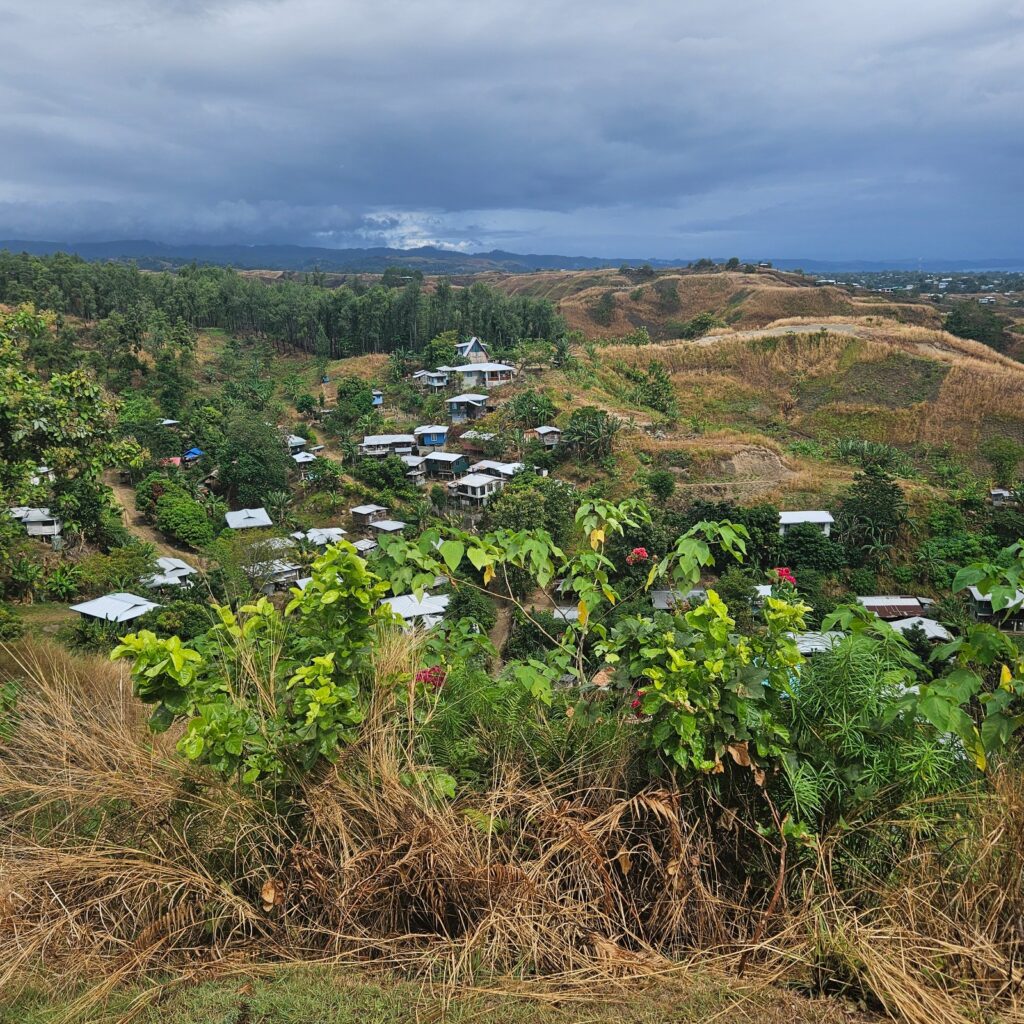
Later in this blog, I’ll describe some of these urban runs in Honiara. It’s worth noting that the Solomon Islands also offer amazing trail running opportunities. The lush hills and jungle paths outside the capital provide incredible routes.
A Brief History
The Solomon Islands played a crucial role during World War II. Famous battle sites like Guadalcanal draw history buffs from around the world. In August 1942, the island became the scene of one of the most decisive campaigns of the Pacific theater.
The Battle of Guadalcanal raged for six months between Allied and Japanese forces. It marked the first major Allied offensive and was a turning point that shifted the balance of power in the Pacific. Even today, remnants of that struggle remain: rusting tanks hidden in the jungle, aircraft wrecks beneath turquoise waters, and solemn cemeteries that honor those who fought and died here.
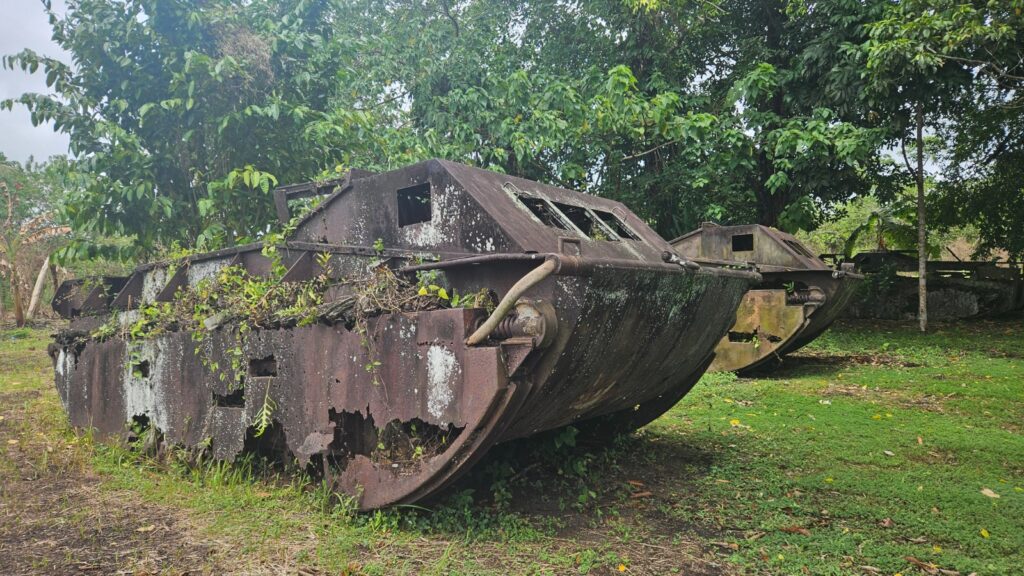
Later in this blog, I’ll share details of our tour of the battlefields. History comes alive in the very landscapes you can still walk and run across.
Why Runners will love it here
Searching “Running in Solomon Islands” or “Where to run in Solomon Islands”? You’re in for an epic experience!!
Running here is more than exercise—it’s a way to connect with Honiara’s spirit. Expect to see schoolchildren in uniforms, street vendors preparing their stalls, old men calling out greetings, and the dramatic tropical sky changing from sunrise glow to looming rain clouds. Each step immerses you in the city’s rhythm, making even a short run feel like a vivid cultural journey. 🌞🌬️
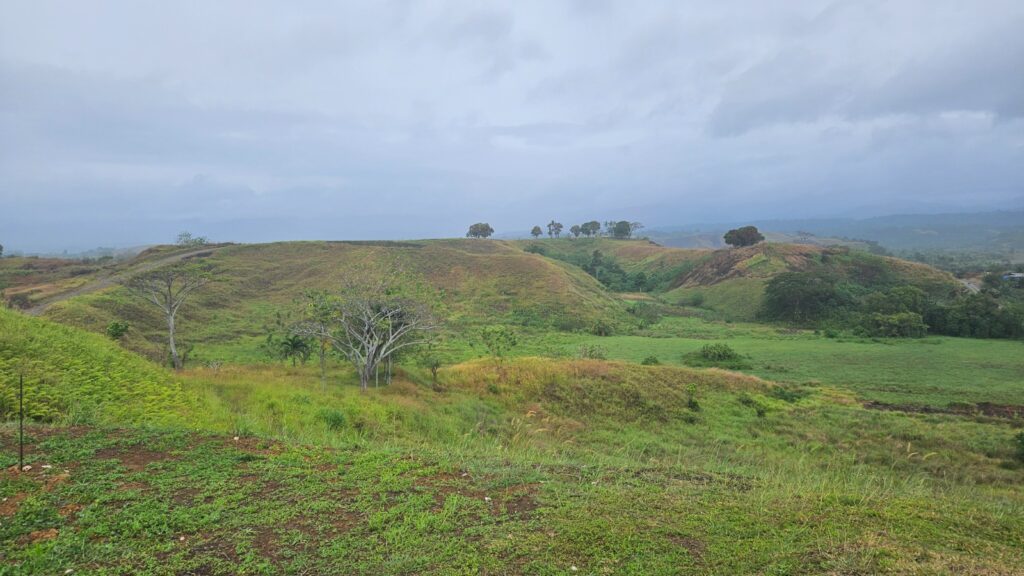
The Solomon Islands is truly a hidden gem for runners who crave variety, culture, and natural beauty all in one place. Whether you’re pounding the pavement in Honiara or trailblazing through jungle-covered hills, this is a destination where your runs double as unforgettable adventures. Plus, the welcoming Melanesian communities add a warm, personal touch to every mile.
So if you’re looking for a “Guide to running in Solomon Islands” that combines culture, history, eating and epic routes, this is it. Pack your shoes, and get ready to run in paradise! 🌺👟🏃♀️
🌍 The Trip 📷: What to see around Honiara in the Solomon Islands
Our time in Honiara blended running with rich history and everyday island life.
After our city loop, we set out to explore Guadalcanal’s WWII legacy on a dedicated tour—then later, we pushed farther on foot with a 12k run to Kakabona, and even squeezed in a bonus dash to the airport under heavy rain.
Here’s how it all fit together, step by step.
Walking through History: our Guadalcanal WWII tour
We went on a half-day East Honiara WWII Battlefields tour, which turned into a full day because of heavy traffic and even heavier rain. The day before had been sunny, but on tour day it started to rain while we were bathing in the swimming pool after our run. And it didn’t stop.
The tour was interesting and well organised. Our guide, Rick, a football player and fan, shared funny anecdotes (as we passed the National Stadium) about the South Pacific under-16 championship: apparently both New Caledonia and PNG cheated with players older than 16 🤣.
Beyond facts and figures, he offered a perspective on why the Americans won. Standing by a Japanese cave/trench, he said: “The Japanese were better engineers.” But they treated locals as inferior, committed atrocities, and alienated the population, whereas the Americans enlisted local help—and the islanders knew the terrain and conditions.
Guadalcanal American Memorial
Our first stop was the Guadalcanal American Memorial.
This World War II monument pays tribute to Americans and their allies who lost their lives during the Guadalcanal Campaign.
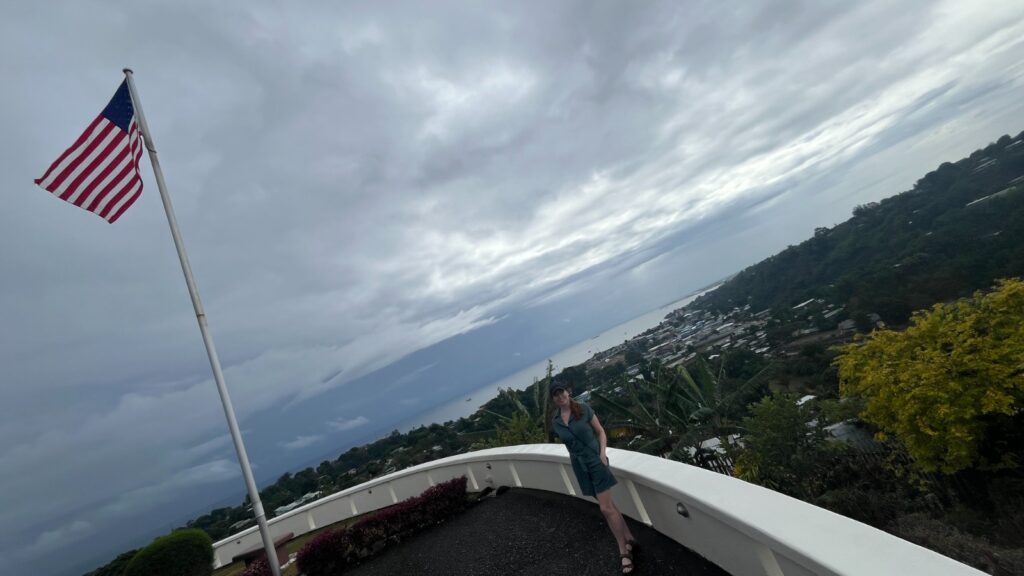
We took our time reading the tributes. We also listened to our guide’s stories about the events that unfolded on this site. It was a moving introduction to the campaign. It set the tone for the day.
Japanese War Memorial
Next, we climbed up to the Japanese War Memorial, also called the Japan Peace Memorial Park, located on Mt. Austin.
Built to honor Japanese forces who died during the campaign, the memorial offered a serene spot to walk around.
We took in the view and captured some memorable photos.
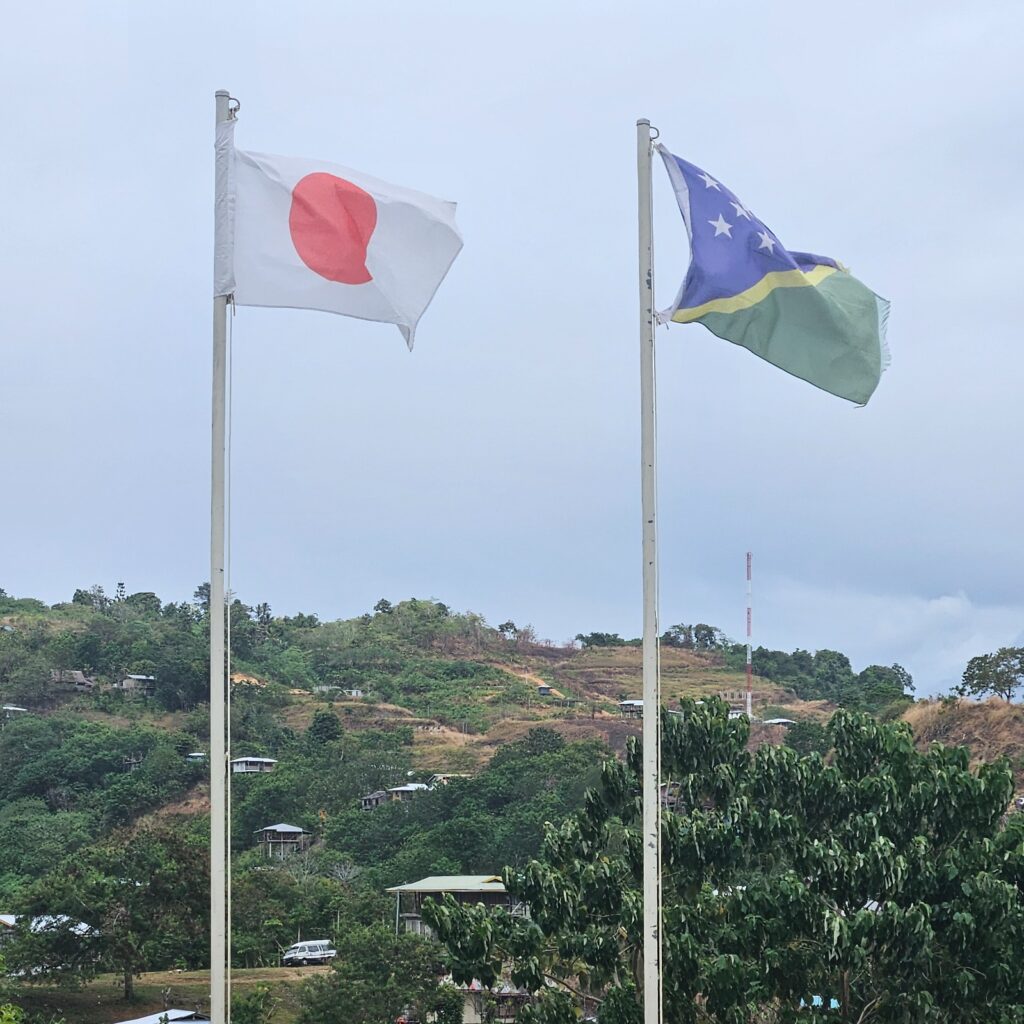
Standing there, we felt a quiet sense of reflection on both sides of the conflict. 🌄
Edson’s Ridge
One of the highlights of the day was Edson’s Ridge, also known as Bloody Ridge. This ridge was the site of fierce fighting between the Imperial Japanese Army and the United States Marine Corps. Under the leadership of Lieutenant Colonel Merritt Edson, the Marines successfully defended the ridge, earning it its name.
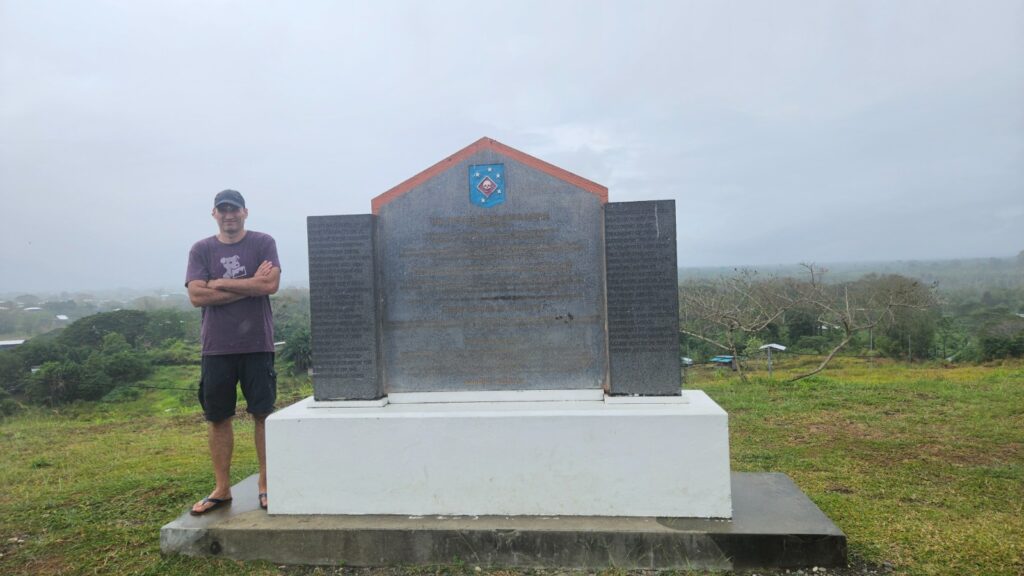
We took in the view overlooking the Lunga River, imagining the intensity of the battle that took place there. 🏞️
Solomon Islands Memorial Garden
Further along, we visited the Solomon Islands Memorial Garden, near Honiara International Airport.
This peaceful, reflective park is dedicated to soldiers who lost their lives during World War II.
It focuses particularly on those who died during the Guadalcanal battle.
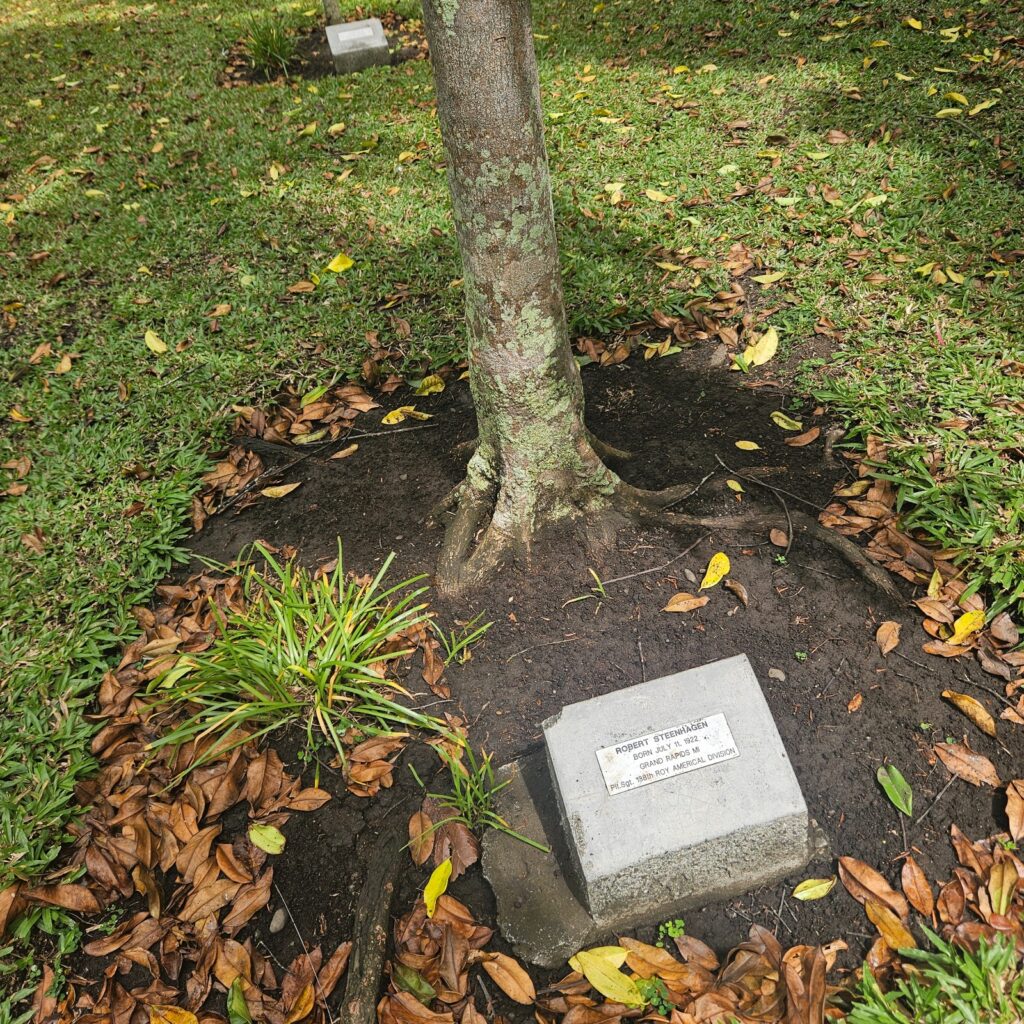
The trees were planted in neat rows. Plaques bearing the names of fallen soldiers were lined under the trees. Walking among them, we felt the solemn weight of history. We appreciated the importance of remembering those who sacrificed so much. 🌿
Tetere Beach WWII Museum
We concluded the route east at Tetere Beach WWII Museum, filled with military artifacts—abandoned amphibious troop carriers (amtracks) and other relics in an open-air setting.
Here, Rick also explained “the tensions” in 2005: apparently some locals even reconditioned old WWII tanks. What a great tour!
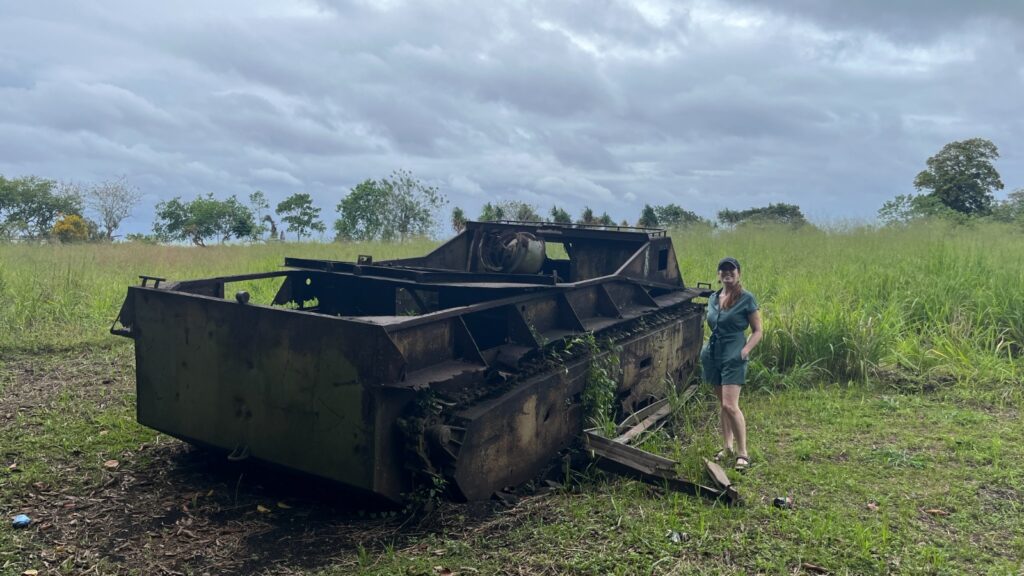
By the end of the day, we had experienced a full spectrum of Guadalcanal’s WWII history: grand memorials, scenic overlooks, hands-on museums, and personal stories.
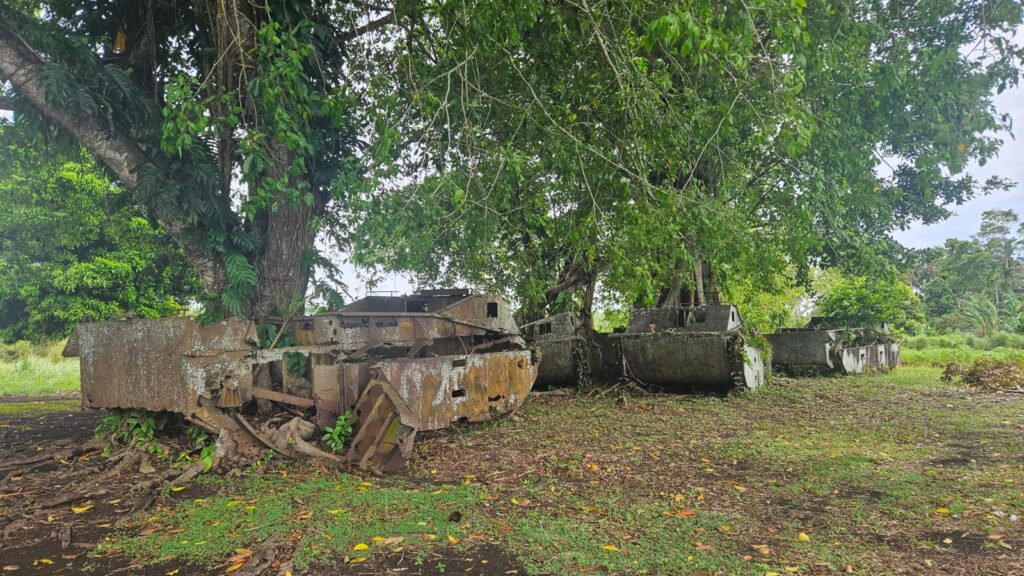
Heading back, we passed by “Hospiral number 9,” which still today bears the old name of the American campaign hospital set during the battle. We concluded the tour mid-afternoon under heavy wind and rain.
Many locals took refuge under massive trees with roots standing out over the pavement; others battled the wind with umbrellas… on top of pickup trucks! And earlier that morning we’d seen a few guys washing a car—while it rained!
By the end of the day, we had experienced a full spectrum of Guadalcanal’s WWII history.
🏃♀️ First Run: 4k through Honiara’s landmarks 🏃♂️
We laced up our shoes and stepped out of the hotel at 6:20 a.m.
The capital of the Solomon Islands was already wide awake: streets bustling with life, vendors setting up, students on their way to school. The temperature was perfect—such a relief after the scorching heat of the previous day.
A light breeze kept us fresh, and by the end of the run a drizzle surprised us, a gentle prelude to the heavy rains that would pour later. 🌧️
Curious about this weather in what’s officially the “dry season,” we asked our guide. He shook his head and said: “The weather is crazy nowadays! Climate change.” The winds and downpours, he explained, were no longer unusual. 🌍
Along Honiara’s Main Artery
Our route followed Lambi Road, the main coastal artery of Honiara. This busy thoroughfare runs parallel to the shoreline, connecting the port, the harbor, and many of the city’s highlights.
Just as we turned onto the road, we spotted the Central Bank of the Solomon Islands, an imposing, heavily guarded landmark that made for fun video footage. 🏦
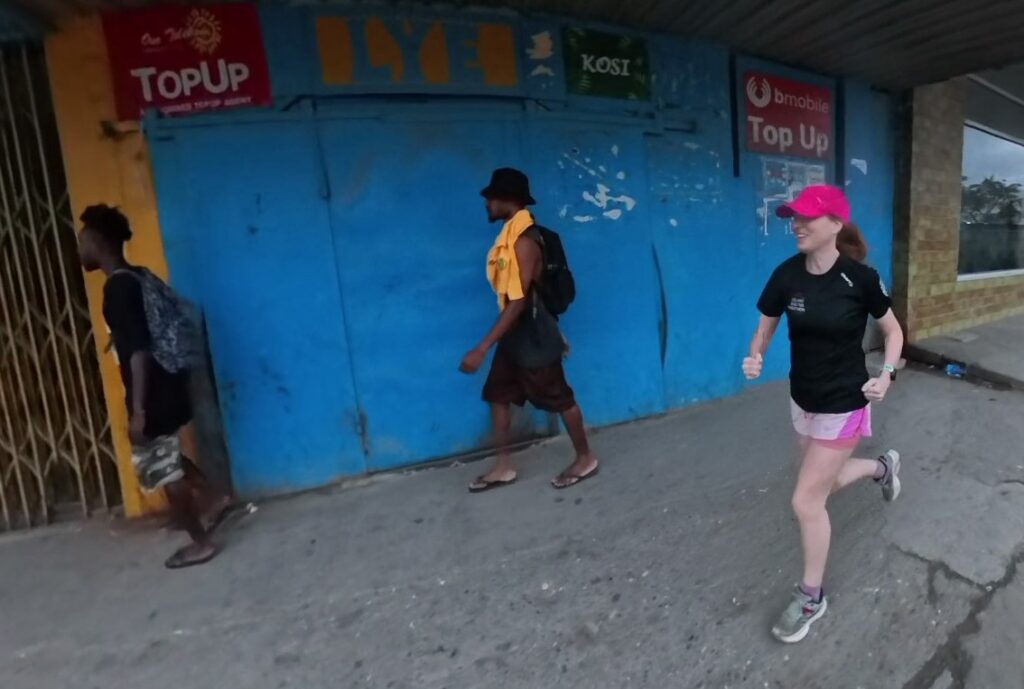
The road was a little bumpy but perfectly runnable, and at that early hour it was wide enough to share with the handful of pedestrians. Later in the day, it would be completely clogged with traffic. And our guide told us it often floods after heavy rain.
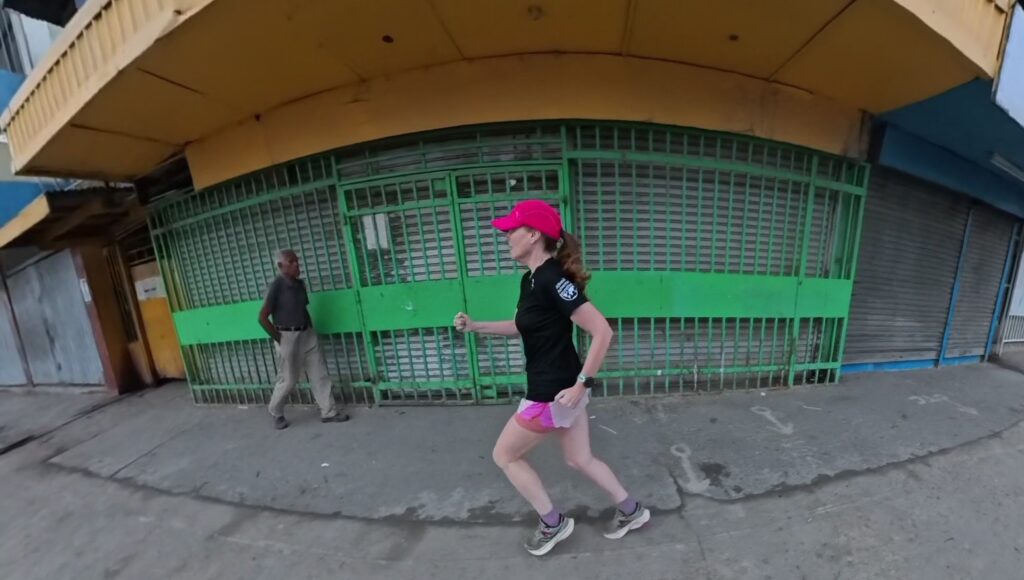
Shops lined the way, still shuttered but glowing with bright colors, typical of the Pacific aesthetic. The people we met along the way gave the run its flavor.
A girl with a comb stuck in her hair, African-style (something I had also seen in São Tomé and Príncipe).
A large man carrying a tiny pink chair, the kind you’d expect in a little girl’s room. Old men, toothless but cheerful, calling out “good morning”.
Young guys dressed like Coolio in Gangsta’s Paradise, giving us quizzical stares as if wondering why on earth we were running. 👀
The Climb to Holy Cross Cathedral
At the 2 km mark, we reached our first goal: Holy Cross Cathedral, the largest Catholic church in the Solomon Islands.
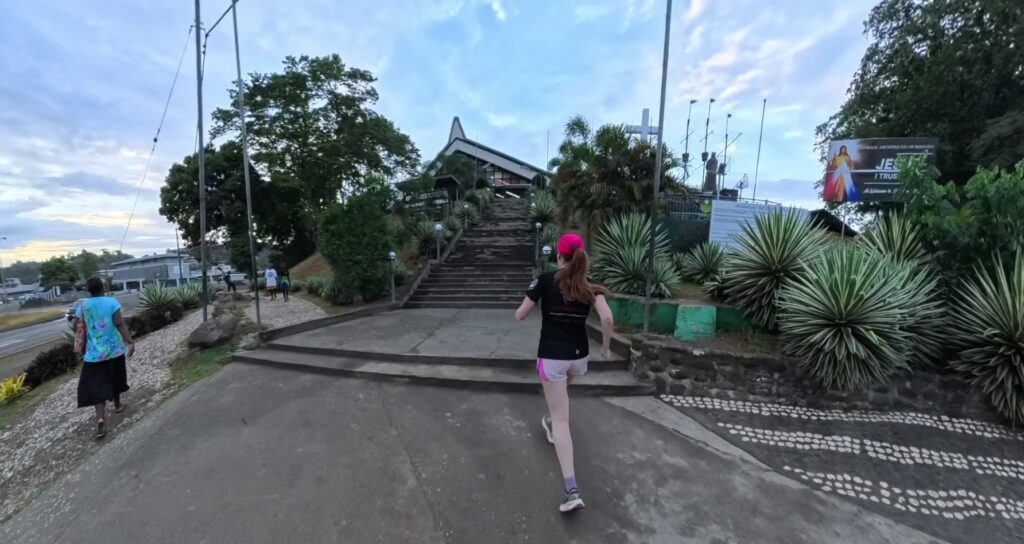
Perched on a hill, the cathedral is visible from the main road, and the stairway leading up is lined with colorful statues of saints and priests.
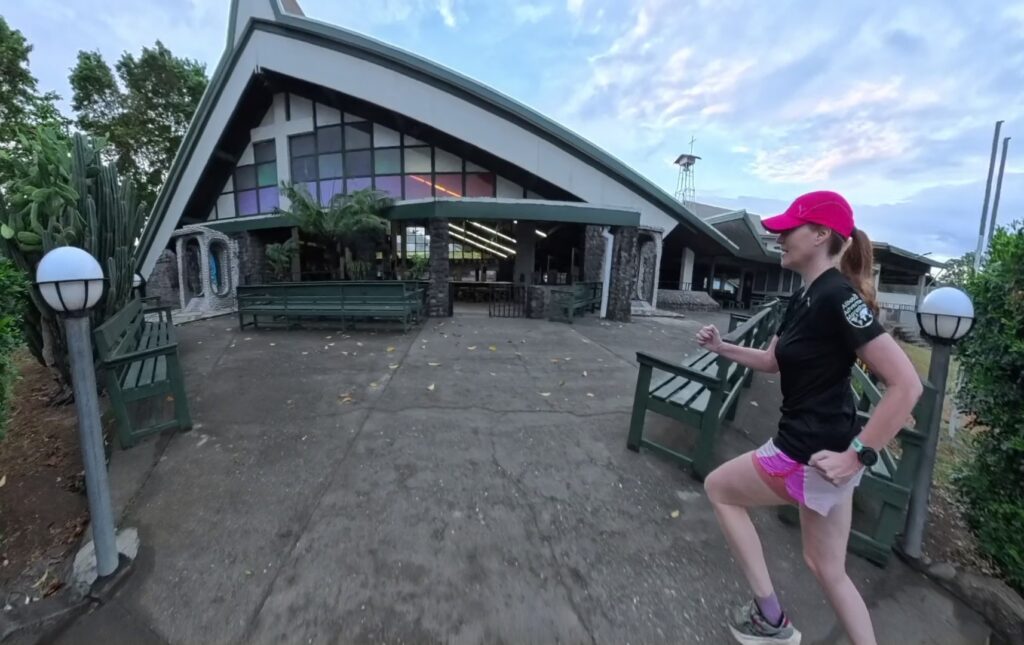
At the top, the scene was striking.
Some homeless people asleep outside, and a solitary woman praying in silence inside. We entered the vast, open interior, which had no walls, allowing the sea breeze to flow through.
The space carried a distinct South Pacific flavor: pidgin-language signs praising the Lord, vivid paintings and statues, and rows of simple wooden benches. It was peaceful, atmospheric, and deeply moving. 🙏
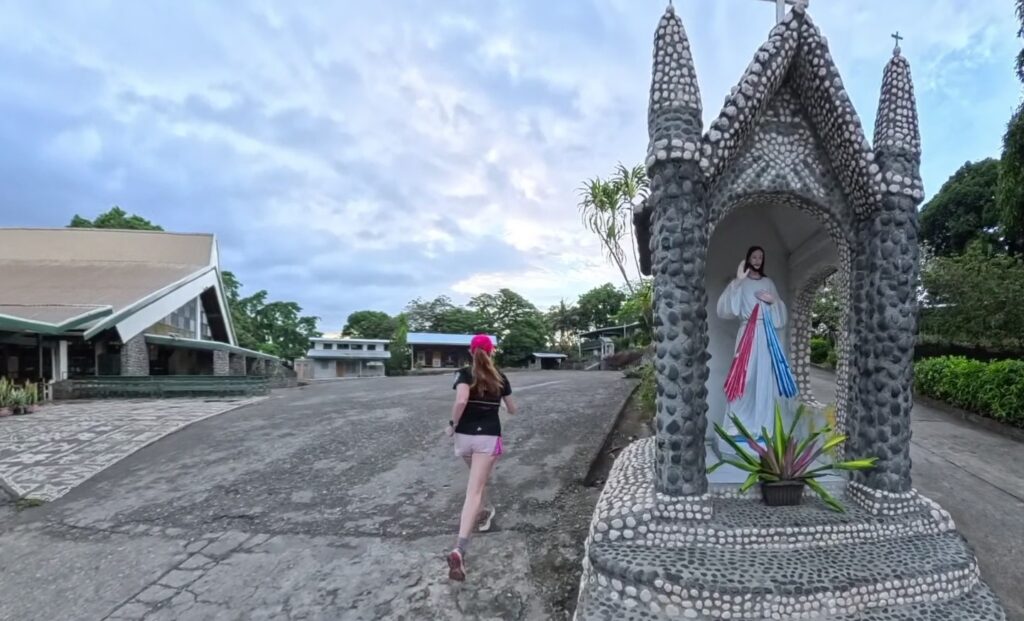
After a short pause, we set off again, passing by a series of chapels with statues before rejoining the main road.
Through the Central Market
Next stop: Honiara Central Market. Though not yet at full capacity, it was already filling up with life.
White minibuses and pickup trucks, the city’s main modes of transport, stopped constantly to drop off passengers. Students in uniforms, women in the traditional flowery island dresses, men in baggy 90s “Bronx-style” outfits, even a few in suits, crowded the entrances.
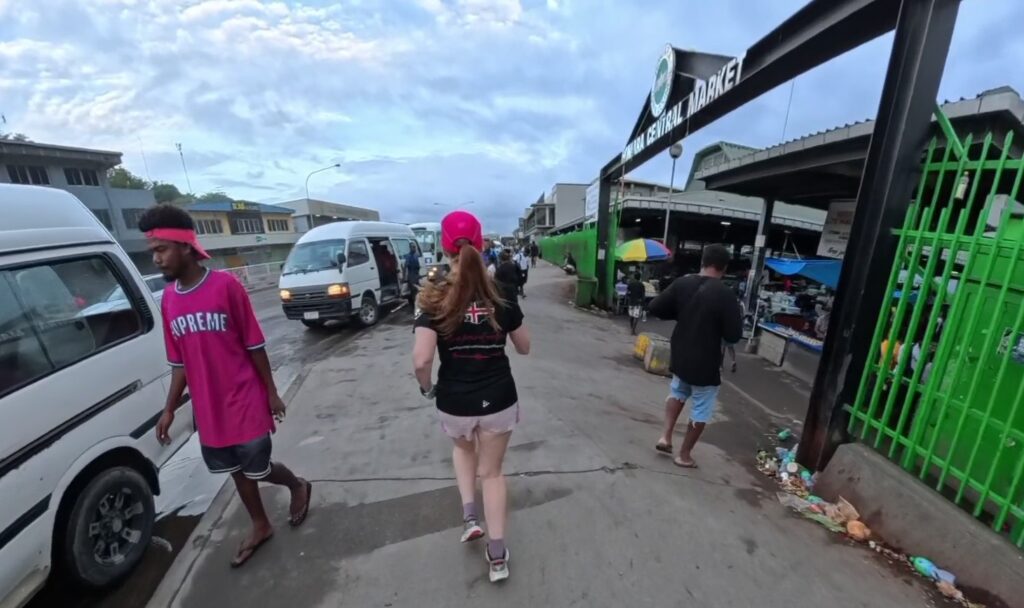
Inside, vendors were setting up their stalls with tropical fruits, betel nuts, and everyday goods.
The building itself had a bright green wall and a roof in the traditional local shape. Running past the market felt like weaving through the heartbeat of the city. 🍍
Into the Harbor: Point Cruz Wharf
Half a mile later, we spotted the entrance to the harbor and couldn’t resist. We slipped inside and found ourselves in the thick of Point Cruz Wharf.
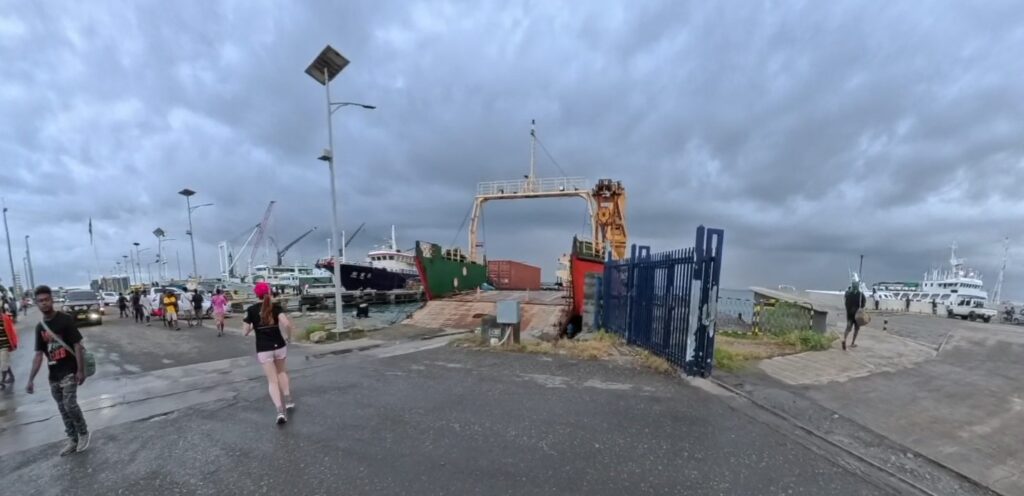
This is Honiara’s main seaport. The Solomon Islands’ hub for both international shipping and inter-island traffic.
Huge cranes swung containers in the air, fishing boats rocked on the tide, workers shouted orders, and everywhere was activity and organized chaos.
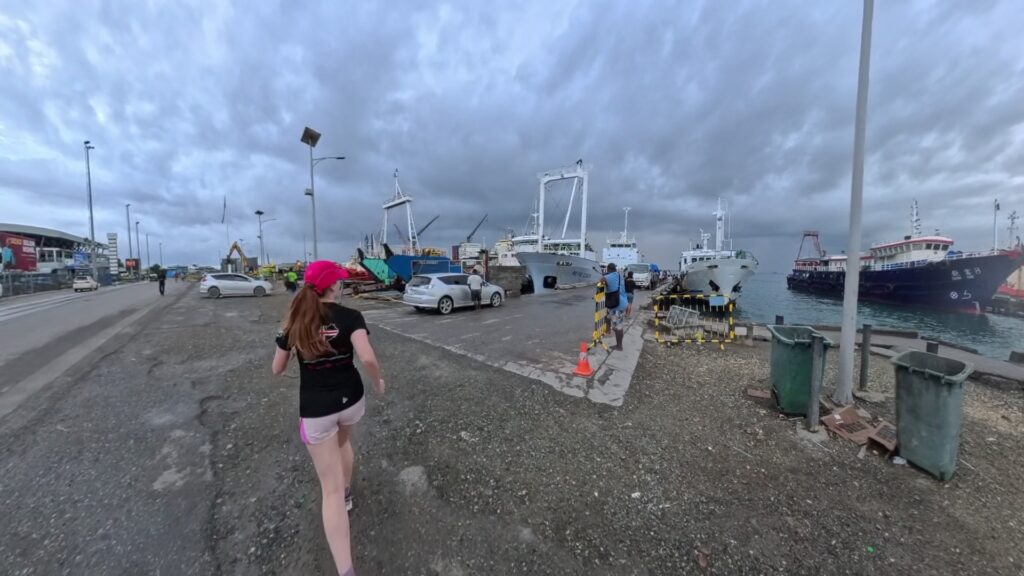
Historically, the port was named by a Spanish expedition in 1568, a reminder of the islands’ long entanglement with global exploration and trade.
Today, it remains the lifeline of the nation, vital for both commerce and travel between the archipelago’s many islands. 🚢
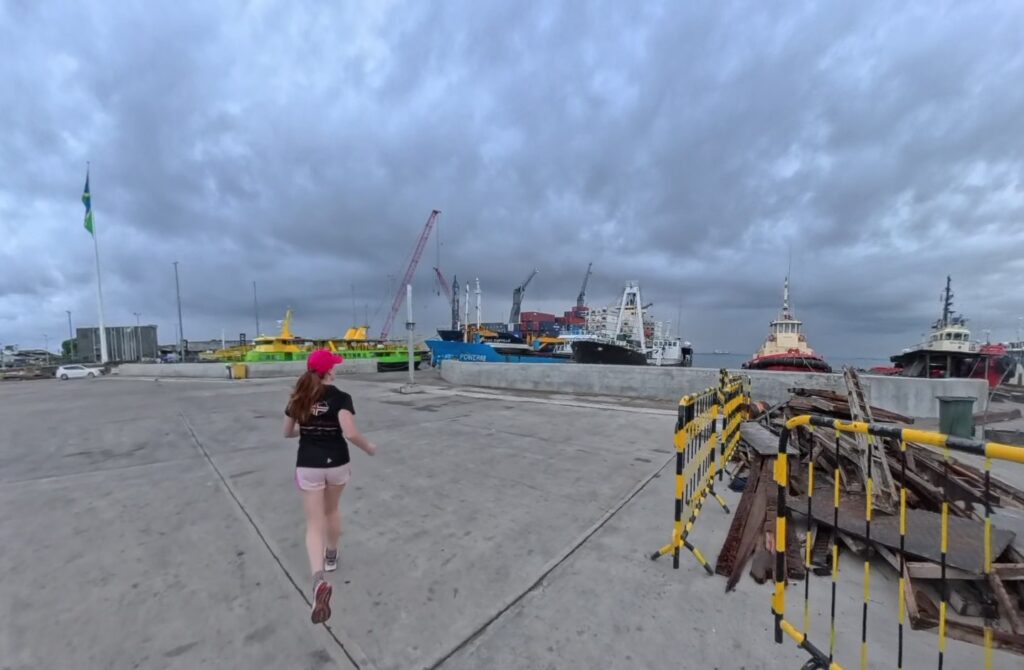
We ran to a small peninsula marked by the Solomon Islands flag and then to the Solomon Scouts & Coastwatchers Monument, honoring the local forces who helped the Allies during World War II’s Guadalcanal campaign.
Above us, the sky grew heavy and grey, adding a dramatic backdrop to the harbor’s energy.
Back to the Hotel
We retraced our steps, returning to the hotel just as the rain began to fall harder. In just 4 kilometers, we had experienced the essence of Honiara: its busiest road, its most important church, its central market, and its bustling port.
A run is often the best way to truly meet a city. On this short loop we found color, history, and humanity—everything that makes Honiara so alive in the early morning. 🌅
🏃♀️ Second Run in Honiara: 12k to the beaches west of the capital 🏃♂️
Setting Off
On our third day in Honiara we decided to venture further outside Honiara: a few kilometers west. We wanted a taste of semi-urban life and to see the beaches.

We studied the route and aimed for 10–11 kilometers; finally, we did 12.
My legs were still a little sore from the 7k run down Mt. Kuta in PNG, which basically destroyed my quads, but the easy pace helped me recover as we ran quietly, taking it all in.
We left at 6:30 and finished before 8. Cloudy skies, no sun, no rain (unlike the downpour during our WWII Battlefields tour the day before), but hot and humid by the end.
Along the Route
Outside Honiara, the main street was being renovated and sidewalks added. And they were working on a Saturday! Those 2 km on brand-new pavement were a treat 🙂. Later it felt more like a trail: I picked the route while Roger filmed, threading around puddles, mud, rubbish, and random obstacles.
Normally I’d just follow what the locals did. Friendly greetings: “Good morning,” “Hello”, came constantly.
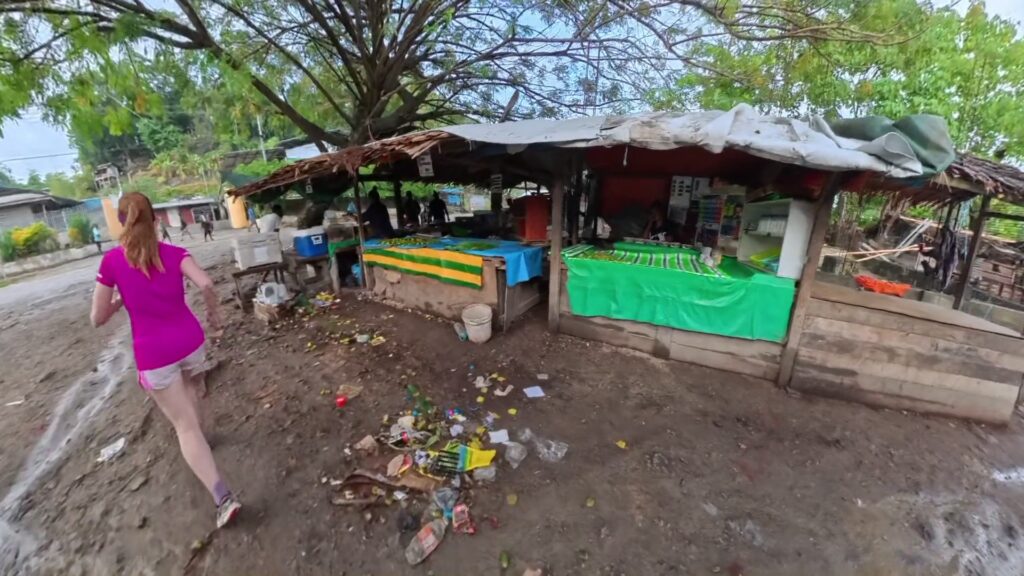
The funniest moment: a young drunkard called “Miss, miss!” and then, “I love you!” Definitely one for my “funny things heard when running” list 🤭.
A Quick Stop
At kilometer 10 we ducked into a local shop for two bottles of water and a Fanta for a sugar boost.
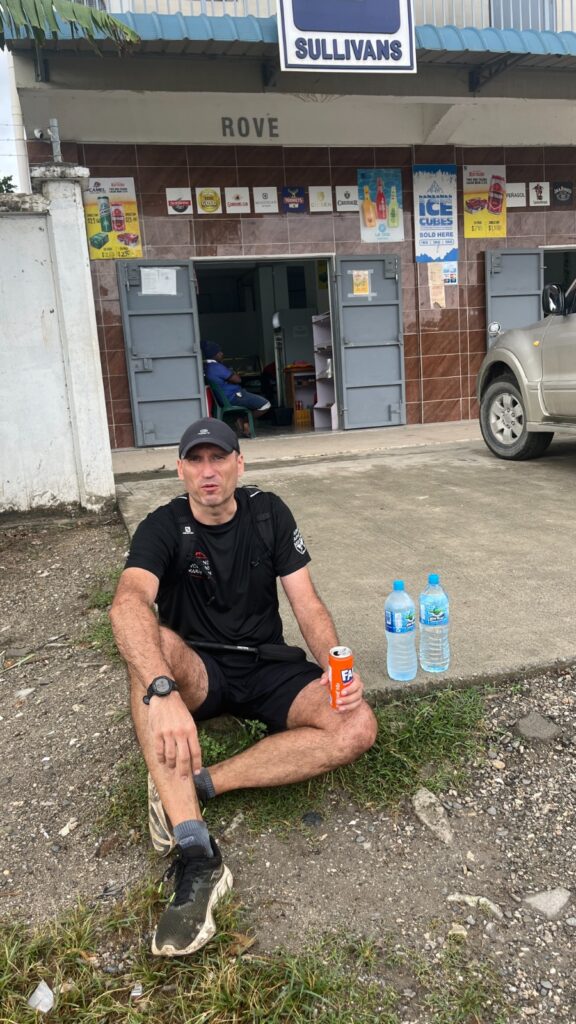
It doubled as a glimpse into a supermarket far from tourist areas. What surprised me most was the quantity of alcohol— cocktails, wine, gin, whisky — while soda choices were scarce.
Life Along the Road
The run served up snapshots of daily life: pigs (big pigs!), a dirty patch filled with cocks and chickens, and lines of people waiting for white vans. The backbone of local transport.
A very elegant elderly woman with well-groomed white hair smiled; across the road, in stark contrast, a much younger lady drank and smoked outside a bar. It was hot and humid, full of tropical trees, abandoned tires (a common sight in many developing countries), and leaves and flowers rotting on muddy ground.
Despite airport warnings about not lighting fires on the ground because of WWII bombs, smoke from morning fires drifted from stalls:
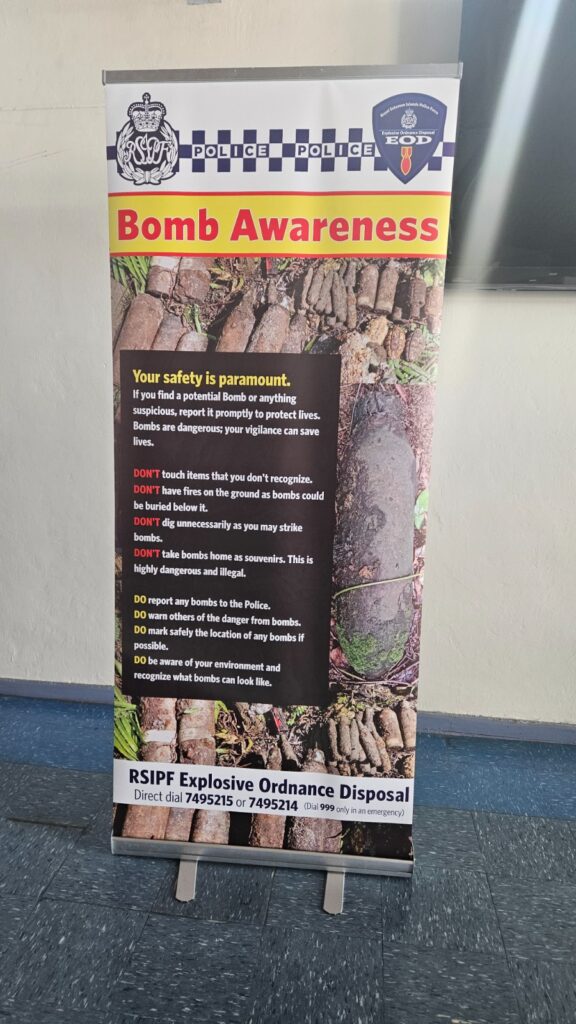
They didn’t seem to care much.
Encounters in Kakabona
About 6 kilometers from Honiara we reached Kakabona. Btw, “Kakabona” in Catalan literally means “good sh&t”. So funny! 😂

A roadside beer stall was full of drunkards who had likely partied all night. They laughed and shouted, brandishing their drinks, but without menace.
Next door, barbecue stalls sizzled; Roger passed by filming and commenting “humm humm,” making it clear the options looked tasty.
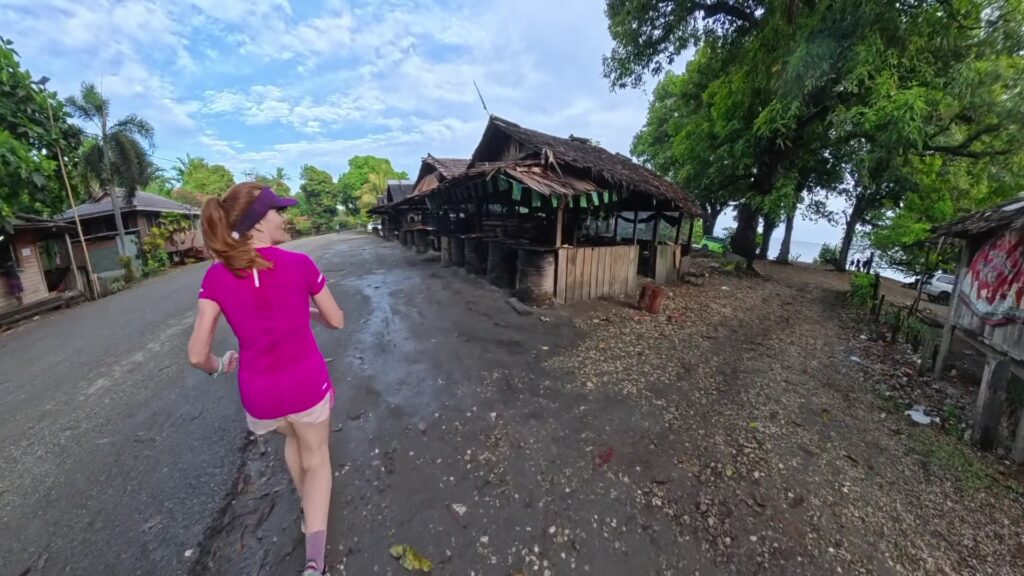
Funnily enough, this was a “running on empty” outing—some protein would have helped!
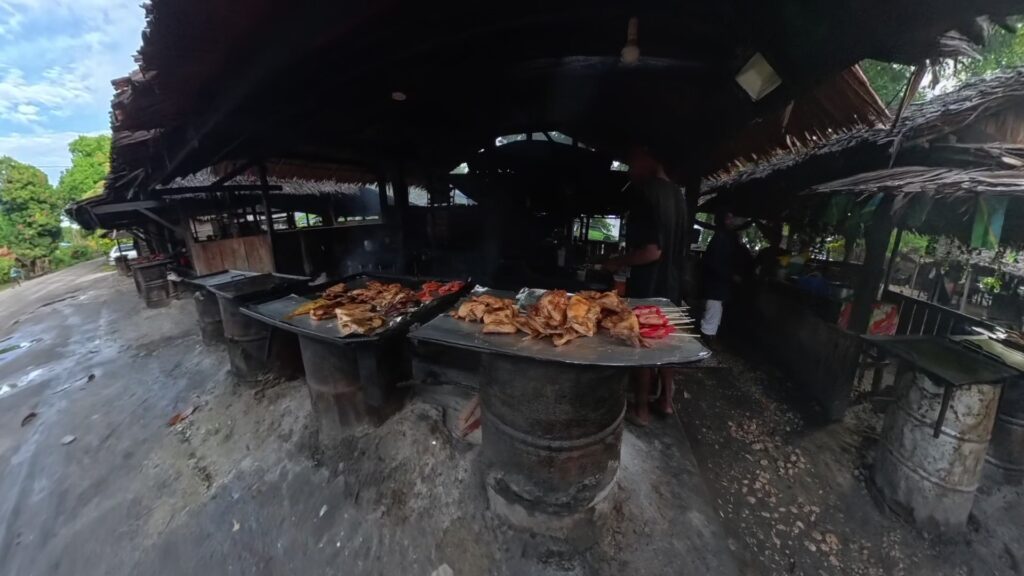
We also came upon a big Roman Catholic Church that drew us in immediately.
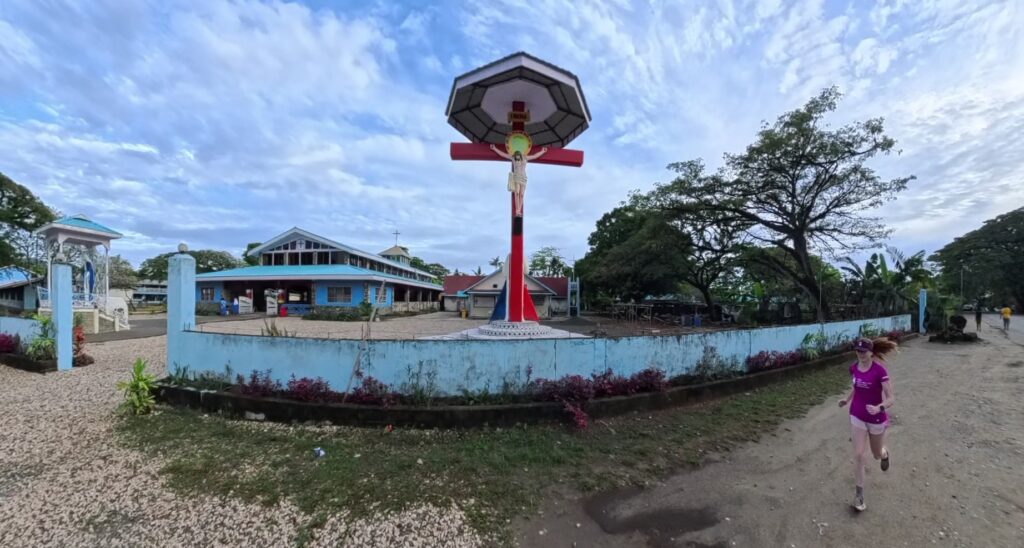
Four nuns in dark-blue frocks smiled, invited us inside, and said photos were fine; when we left, they thanked us for visiting. Inside, colorful windows splashed rainbow reflections onto a clean, shiny floor. Magic.
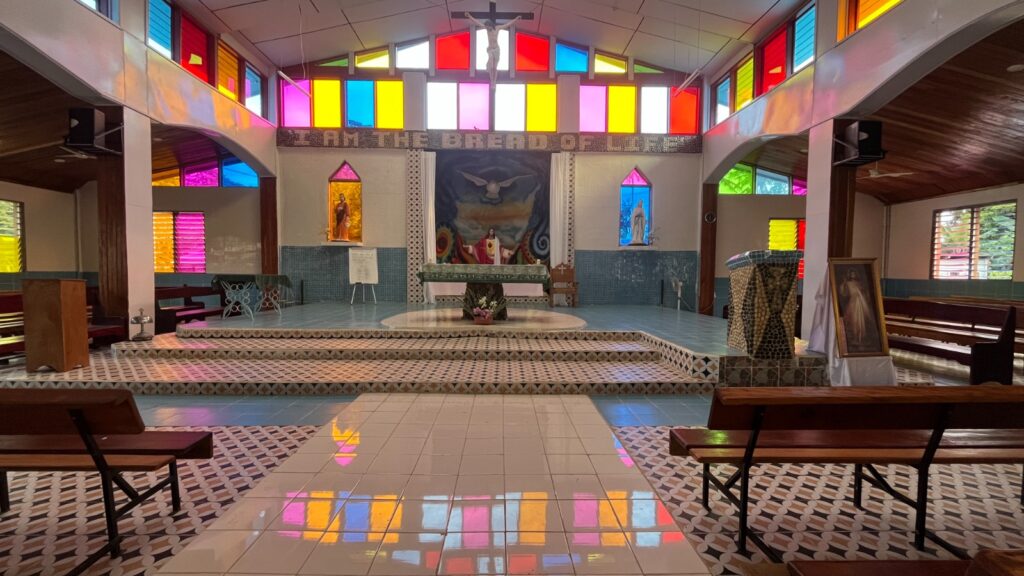
Like Holy Cross, it was open to the breeze, with a very large cross outside and many naïve yet touching statues of Christ and the Virgin Mary everywhere. Plus a picture of the new Pope 👍.
The Beaches
Beaches were harder to access than expected: huts, stalls, domestic animals, many dogs, all harmless, monopolised the coast.
Eventually we reached a stretch that looked like a proper beach 😂.
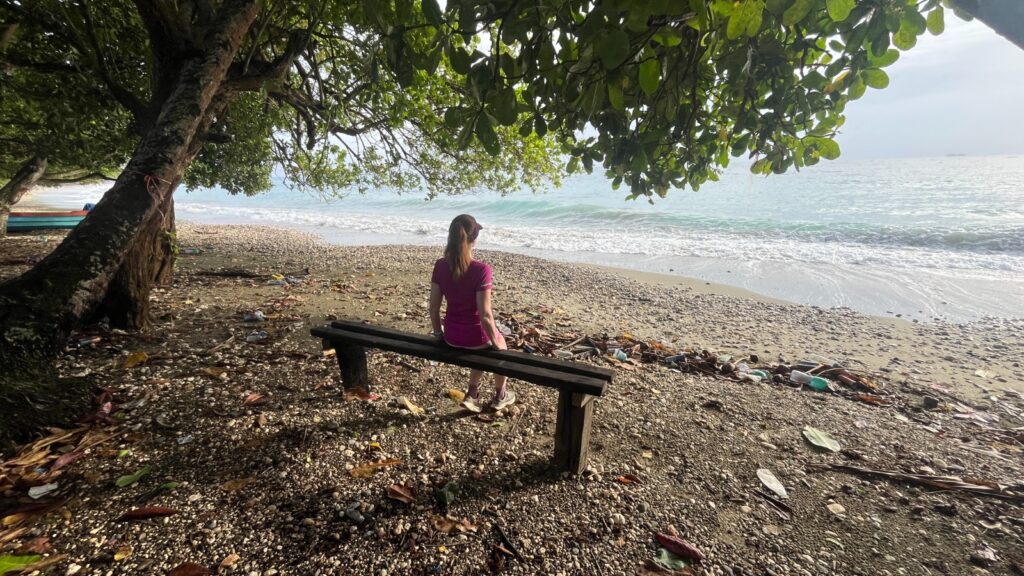
Yes, plastic litter dotted the sand, but it was still beautiful: the brave sea roaring under morning mist, hut-homes nestled in lush vegetation, kids smiling. No tourists, no shops. Just nature and life as it is here.
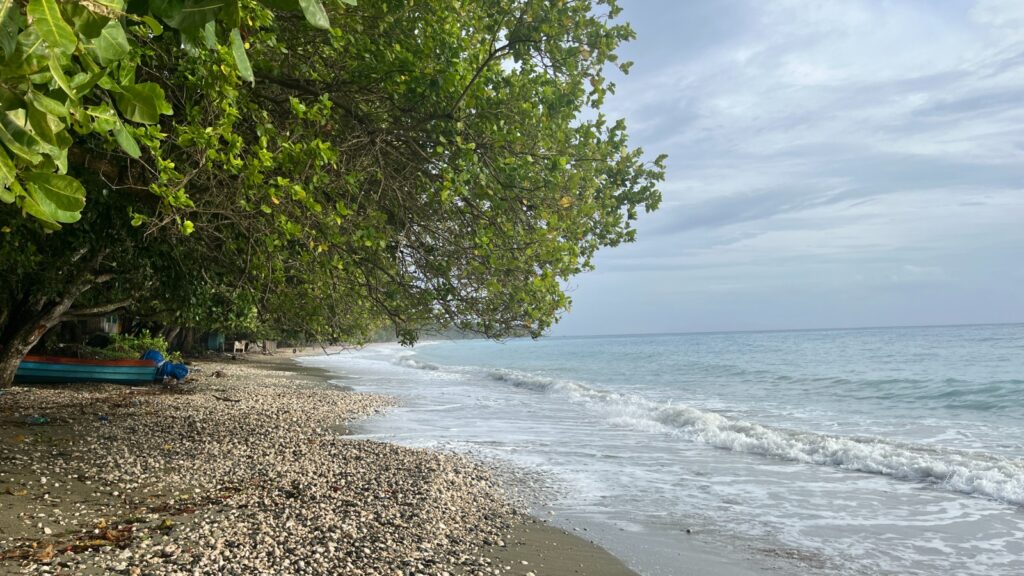
We tried running on the beach, but the rocky, uneven surface made it tough, so we turned back. If you want to venture further, “Turtle Beach” is about 8 kms away from Honiara center.
The Way Back
We returned on the other side of the road where sidewalks—or, rather, the nonexistent sidewalks 🤣—were bumpy, muddy, uneven, and full of hazards.
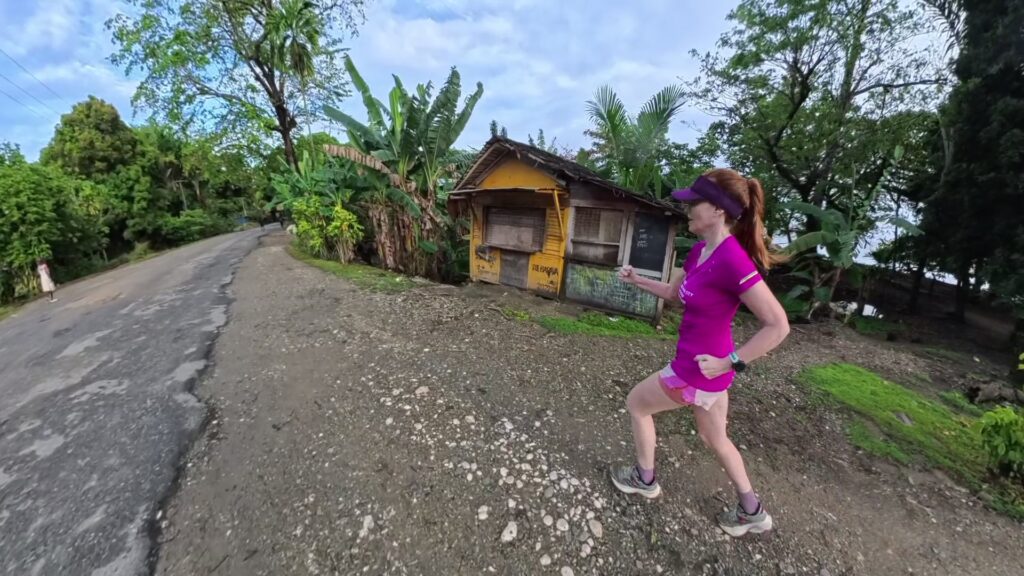
With more traffic and more pedestrians to weave through, it felt like a mini “tough mudder” rather than an urban run. Nevertheless, we reached our hotel, Lime Champs, not too tired and happy to have discovered other parts of the island.
Final Thoughts
All in all, a very easy and nice 12 kilometers one week before the Sydney Marathon—most probably the longest run we will do before race day. Beyond training, it was a wonderful way to experience Honiara beyond the tourist bubble 🌴.
A bonus 2,6k run to the airport, under the rain and carrying our suitcases!!
It seems there is only one road in the whole of Guadalcanal, and it is always congested. We couldn’t make sense of it: if all traffic on the island goes through it, why don’t they fix it?
This endemic problem hit us when we were leaving.
Our hotel shuttle arrived late and then a big traffic jam kept us crawling for minutes and minutes. We grew nervous, checking Google Maps for the remaining distance and our watches for the time. Roger floated an idea to the driver: get out and walk. The driver, surprised, said, “but it is raining!” Indeed it was, but we didn’t want to miss our flight. “If you are fast walkers,” he added, “you might as well make it.”
We agreed that if he caught up, he’d pick us up; meanwhile, we’d double our chances by walking. We timed our walk/run: we needed to do 1 kilometer under 10 minutes. Challenge accepted!
And we did exactly that 💪.
We kept the pace; I wore running shoes (which ended up muddy like a trail), while Roger wore slippers! Kudos to him! He walked briskly, ran at times, and carried two suitcases.
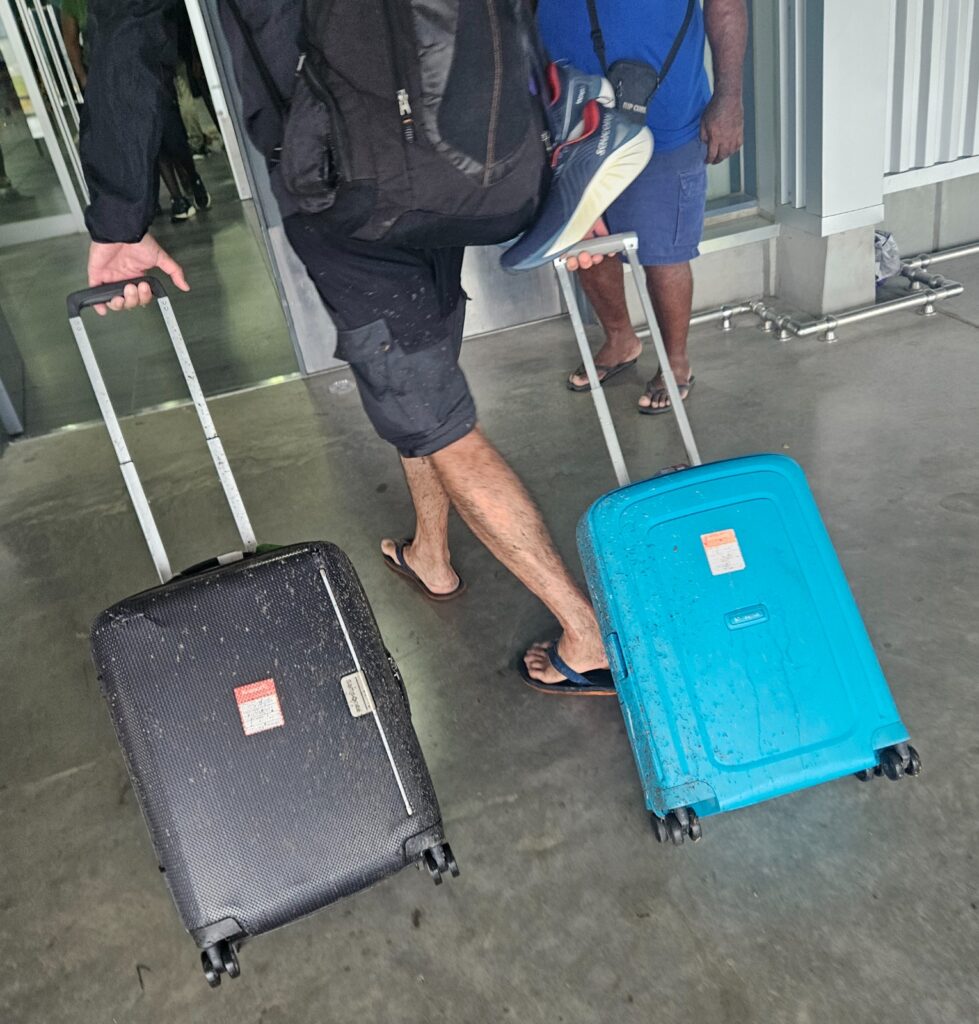
We reached the terminal at exactly the same time as our taxi. We made it! Last to check in, with about 2 minutes to spare 🏆.
🍜 What to Eat in Solomon Islands if You Are a Runner 🍽️🏃♂️
Fueling up right in the Solomon Islands is just as important as lacing up your running shoes!
Whether you’re prepping for a tropical jog or recovering from a jungle trek, the local cuisine has some tasty gems that’ll keep your energy high and muscles happy, with a splash of island flavor and a pinch of fun. 😄🌴
Before the Run: Carboloading 🚀🥥
- Tapioca (Cassava) — This starchy root is a long-run essential, slow-burning and satisfying—basically the Solomons’ natural energy bar.
- Sweet Potatoes — A colorful, steady-carb staple available in orange, purple, and white. Nutritious, filling, and naturally sweet.
- Bananas — The ultimate “grab and go” island snack, packed with potassium and perfect pre-run fuel.
- Fish & Chips — Local fish with a crunchy island twist, served alongside hearty chips—comfort food with Pacific freshness.
- Burgers with a Local Flavor — Think taro or cassava buns, tropical toppings, and island spices giving a classic runner’s carb hit a new spin.
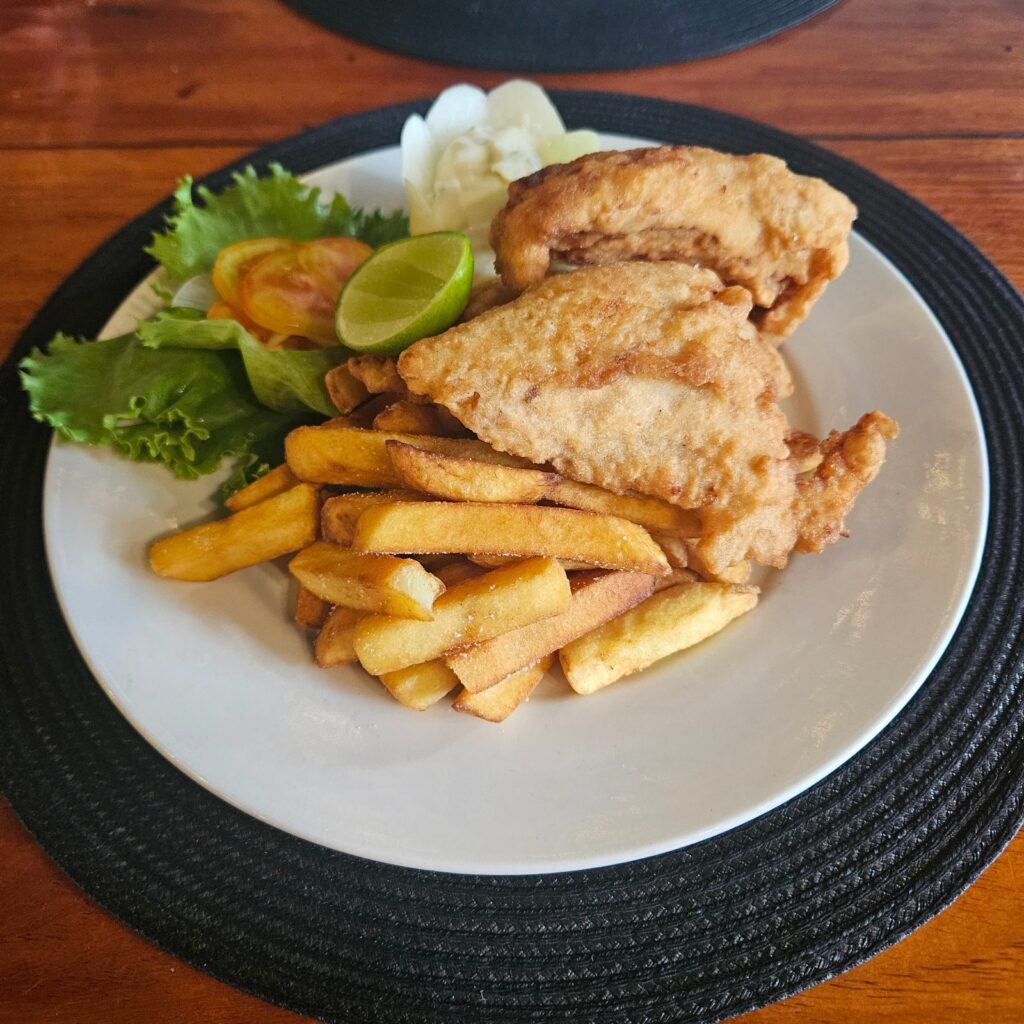
After the Run: Protein Recovery 🍖🌺
- Grilled Fish — Fresh from the ocean, local fish grilled over open flames is the ultimate post-run treat. Packed with lean protein and omega-3s, it’ll help repair your muscles and keep you feeling light.
- Chicken (Island Style) — Whether roasted or cooked in coconut milk, chicken dishes in the Solomons are rich, flavorful, and perfect for muscle recovery. Just be ready for a little spice kick!
- Sweet and Sour Chicken — A nod to the islands’ Chinese influences, tangy and satisfying for post-run recovery.
- Coconut Crab (if you’re feeling adventurous!) — For the brave runner looking to level up their protein game, this delicacy is a local legend. It’s rich, tasty, and definitely a story to tell back home.
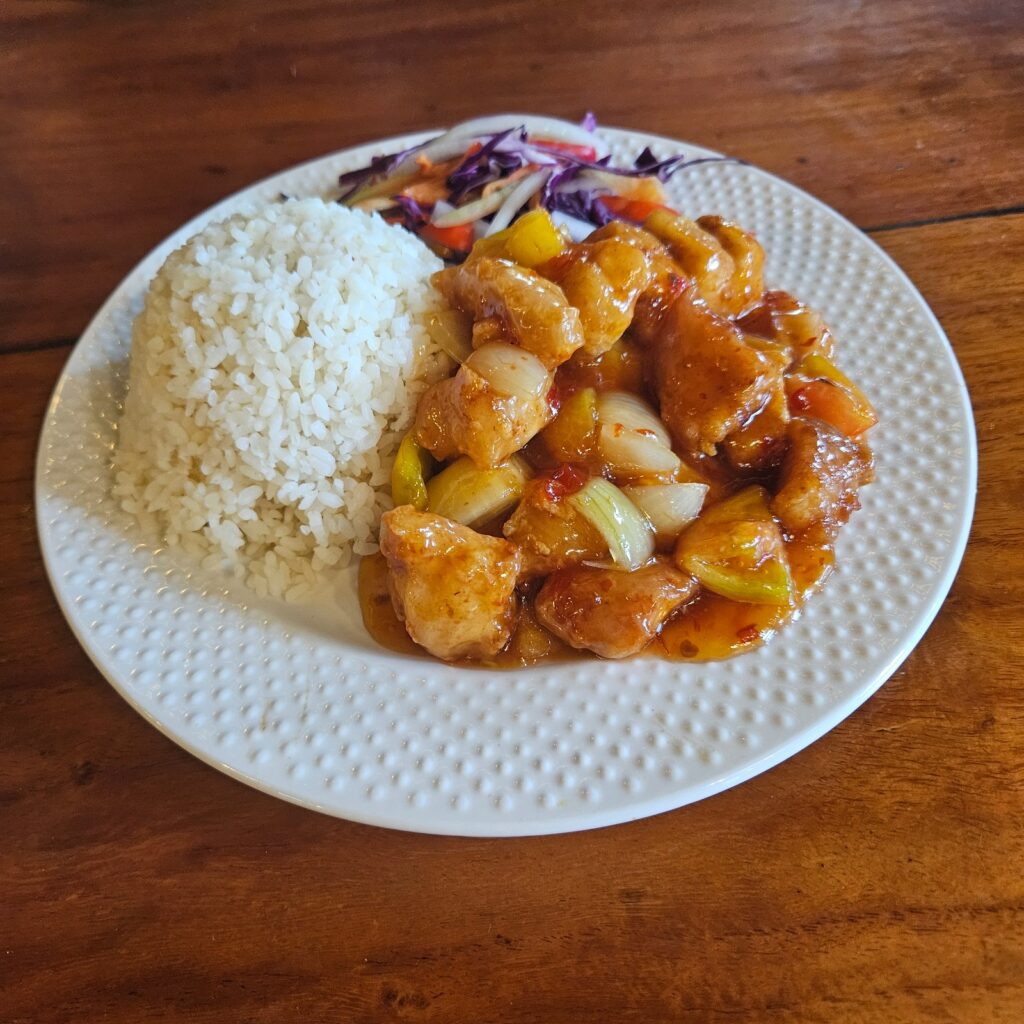
So go ahead! Eat like a local, run like the wind, and soak up every delicious moment on these magical islands! 🌞👟🍴

Useful information
🏃 Running in the Solomon Islands: you can run easily 4k to 15k along the coast of Honiara. Cater it to your needs!
🗓️ Preferably during the “dry season” (from June to November). Although it rained heavily also during the so called “dry” times!
👟 Urban: bring shoes for asphalt if you are running in Honiara. Roads are good enough.
✅ The possibility of exploring a city which will surprise you.
✅ Safe (“the tensions” are now forgotten), exotic, vibrant.

Map


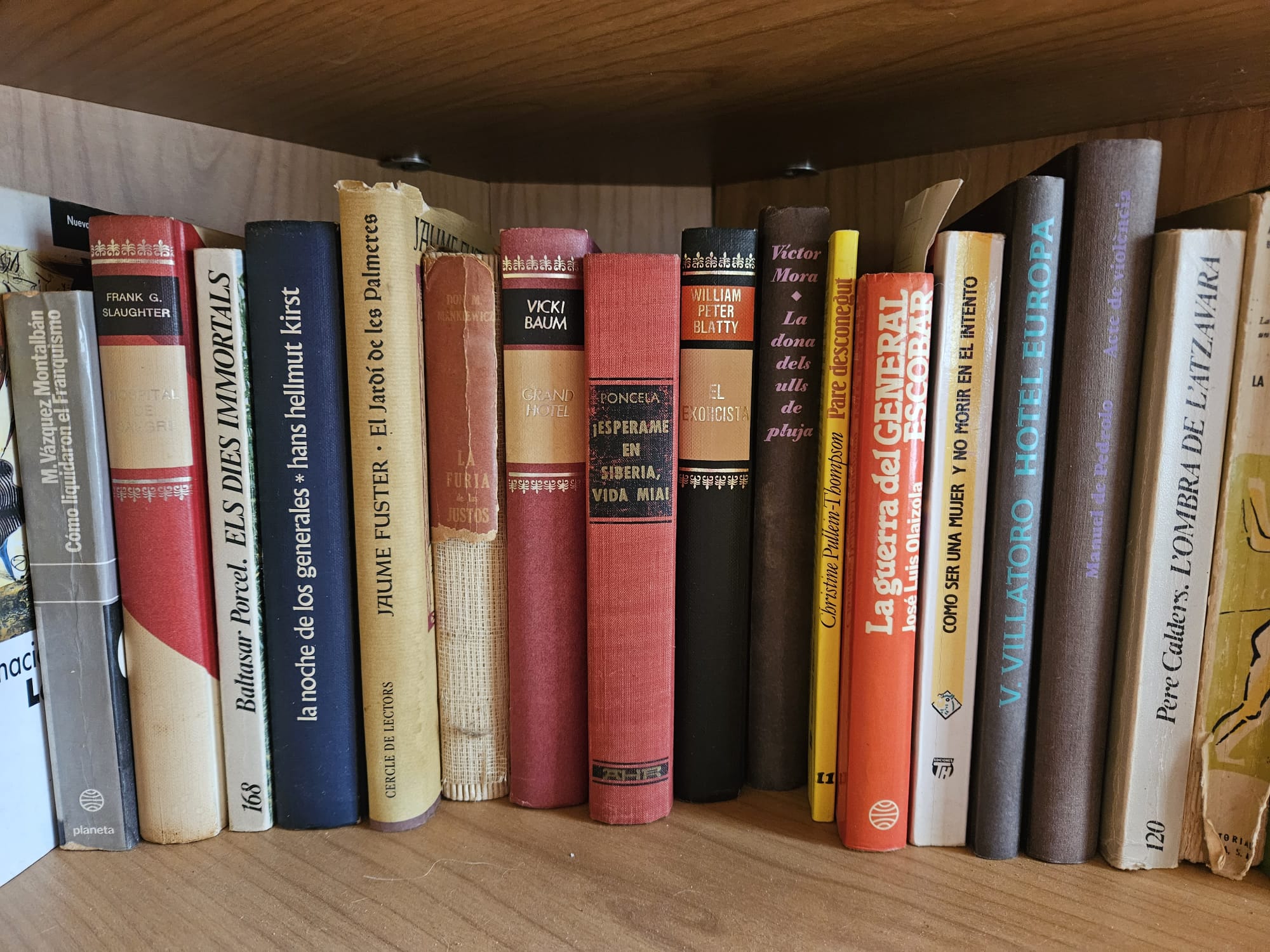
One book
For the book section, I chose the novel that later was turned into a very good movie. I had seen the movie in the past but not read the novel, and I was not dissapointed.
“The Thin Red Line”, by James Jones
It’s a fictionalized but powerful portrayal of soldiers during the Guadalcanal campaign. This novel explores the psychological and physical challenges of war, famously adapted into films.
Reading “The Thin Red Line” before traveling to Guadalcanal is a powerful way to deepen your understanding of the island’s profound history. The novel vividly captures the brutal reality and human complexity of the World War II battle that shaped the fate of the Pacific. It goes beyond military strategy and dates—offering an intimate look at the fears, courage, and moral struggles of soldiers on both sides. This emotional depth helps you appreciate the scars the island still carries and the sacrifices made there.
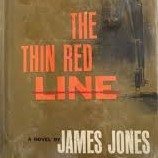
Plot: In August of 1942 the first American marines charged Guadalcanal, igniting a six-month battle for two thousand square miles of jungle and sand. In that gruesome stretch sixty thousand Americans made the jump from boat to beach, and one in nine did not return. James Jones fought in that battle, and The Thin Red Line is his haunting portrait of men and war. The soldiers of C-for-Charlie Company are not cast from the heroic mold. The unit’s captain is too intelligent and sensitive for the job, his first sergeant is half mad, and the enlisted men begin the campaign gripped by cowardice. Jones’s moving portrayal of the Pacific combat experience stands among the great literature of World War II. This ebook features an illustrated biography of James Jones including rare photos from the author’s estate.
